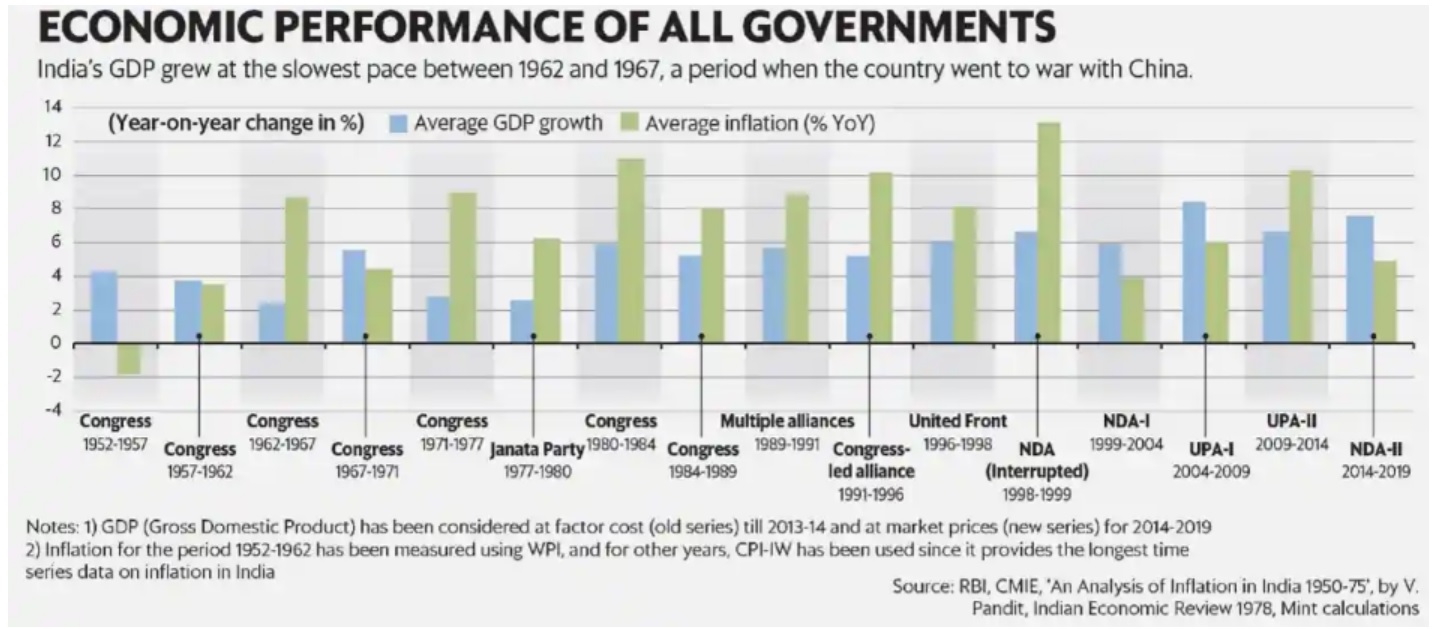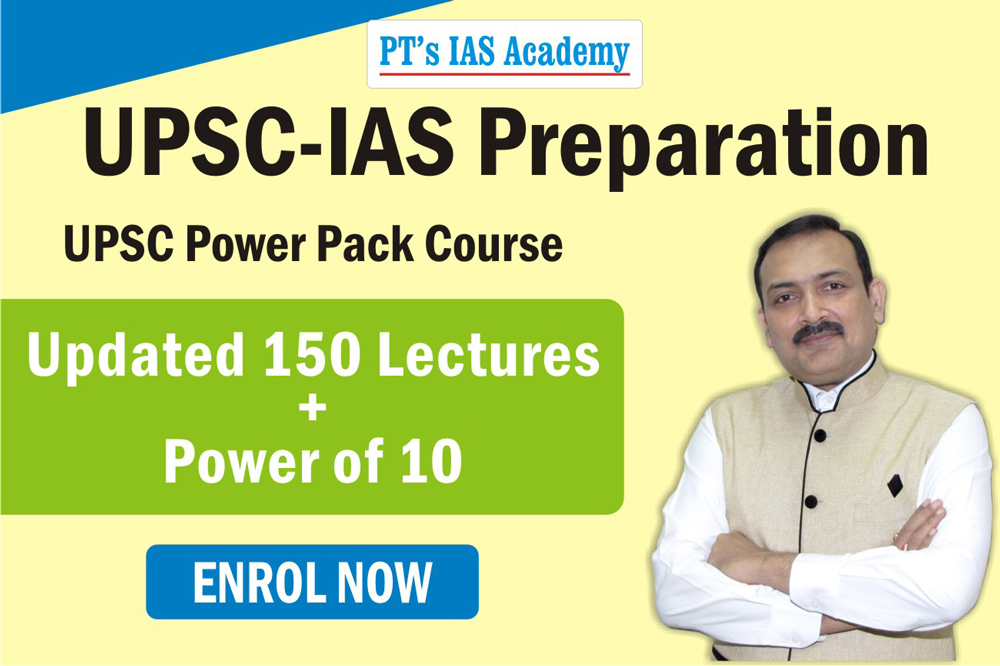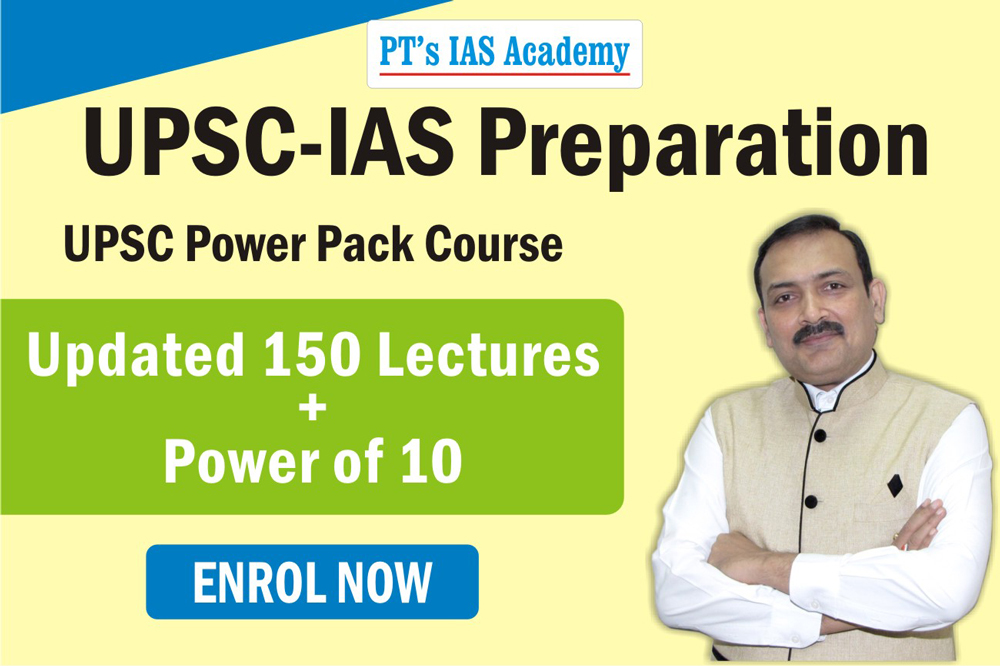An update on the way the UPA alliance emerged, and its present situation.
United Progressive Alliance UPA - History and future
- The story: The UPA, helmed by the grand old party of India - the INC - ruled India from 2004 to 2014. With another competitive general election coming up in 2024, developments are fast indicating a churn in national politics.
- Formation of the UPA: The UPA, formed in 2004 to handle emerging political situations, enjoyed many successes and faced challenges — abandonment by principal partner the Left in 2008, arm-twisting by allies, desertion of some constituents between 2004 and 2014, and the huge loss in 2014 after an unexpected second chance in 2009.
- The UPA came into existence after the Atal Bihari Vajpayee-led NDA’s surprise defeat in the 2004 Lok Sabha elections.
- With 145 seats, the Congress was only seven seats ahead of the BJP. Keeping the BJP out became the imperative for the secular opposition, and the Congress naturally became the core, being the single largest party.
- Veteran Communist leader Harkishen Singh Surjeet, then CPM general secretary, took the lead in this effort. He and the Congress and Surjeet eventually brought together 14 parties – RJD, DMK, NCP, PMK, TRS, JMM, LJP, MDMK, AIMIM, PDP, IUML, RPI(A), RPI(G) and KC (J) – for the post-poll alliance with the Congress.
- The four Left parties — CPM, CPI, RSP and Forward Bloc — provided support from outside, on the basis of a Common Minimum Programme (CMP), which was signed on May 17, 2004 and became the guiding light for policies and programmes.
- While the Congress had not invited the Samajwadi Party and the RLD for the meeting, Surjeet brought both Ajit Singh and Amar Singh with him.
- Other names being considered were ‘United Secular Alliance’ or ‘Progressive Secular Alliance’. But the late DMK patriarch M Karunanidhi, an atheist, told Congress president Sonia Gandhi that in Tamil, the word secular means non-religious. He suggested the name ‘Progressive Alliance’, which everyone agreed to.
- On May 22, 2004, Manmohan Singh took oath as Prime Minister of the UPA government. Among those who took oath were NCP chief Pawar, RJD president Lalu Prasad, LJP president Ram Vilas Paswan, JMM chief Shibu Soren, TRS chief K Chandrasekhar Rao, DMK’s T R Baalu, Dayanidhi Maran and A Raja, and PMK chief S Ramadoss’s son Ambumani Ramadoss.
- The challenges: The first party to leave the UPA was TRS in 2006. KCR, then Labour Minister, and his party colleague A Narendra quit the government over the TRS’s demand for Telangana state. Vaiko’s MDMK left the coalition and withdrew its support to the government in 2007, accusing it of failing to implement most of the schemes in the CMP. The huge setback came in 2008 when the four Left parties withdrew their support over the government’s insistence on going ahead with the India-US nuclear deal. Differences over the deal had come to the fore in 2005 in the wake of PM Singh’s visit to the US, during which New Delhi and Washington decided to renew civil nuclear cooperation. Over the next three years, the government and the Left engaged in protracted negotiations, until the Left’s withdrawal.
- The government was pushed into a minority, but survived the no-confidence motion as Mulayam Singh Yadav’s Samajwadi Party came to its rescue — the same SP that had felt humiliated when it had not been invited to be part of the UPA in 2004.
- Electoral realignments in their respective states led to the exit of the PDP and the PMK in 2009. The PMK left the UPA and allied with the AIADMK in Tamil Nadu against the DMK-Congress, while the PDP quit as the Congress chosse to ally with the National Conference to form the government in Jammu and Kashmir.
- 2009 surprise win: The UPA returned to power in 2009 with the Congress surprisingly winning 206 seats! Although in a much more comfortable position than five years earlier, the Congress still needed allies. And in came the Trinamool Congress and National Conference. Banerjee was given the Railways portfolio.
- But compared to UPA-I, the list of allies had reduced. Only five parties were sworn in with the Congress – the Trinamool Congress, NCP, DMK, National Conference, and the Indian Union Muslim League.
- The UPA did not have the support of the Left, and also missing were Paswan and Lalu The two had ignored the Congress while forming an alliance for polls in Bihar, and the Congress did not invite Lalu’s RJD to be part of the government. The RJD, however, extended support to the government, and so did the SP and the BSP. Lalu eventually withdrew support in 2010, protesting against the adoption of the Women’s Reservation Bill in Rajya Sabha.
- Many parties including the AIMIM, VCK, Sikkim Democratic Front and Bodoland People’s Front, however, were part of the UPA with no ministerial berths.
- Ms. Banerjee dictated terms to UPA-II. In 2012, she asked her party colleague Dinesh Trivedi to resign as Railway Minister after he hiked passenger fares, and nominated party MP Mukul Roy as his successor. The Congress leadership had no option but to comply. The same year, the Trinamool Congress as well as the DMK quit the UPA. In March 2012, the DMK, the second biggest constituent, pulled its five ministers out in protest against the government for not taking up its concerns in the proposed UN resolution against Sri Lanka on alleged human rights violations of Tamils. And in September, the Trinamool Congress pulled out its six ministers in protest against its decision to go ahead with implementation of FDI in multi-brand retail. Jharkhand’s JVM-P, with two MPs, withdrew its support on the same issue. The AIMIM too quit the UPA that year.
- The 2014 loss: The Congress lost heavily in the 2014 Lok Sabha elections, with its lowest-ever tally of 44. Although the grouping was still referred to as the UPA, there was no UPA after 2014.
- In November 2021, Trinamool Congress chief and West Bengal Chief Minister Mamata Banerjee said it would be easy to defeat the BJP, should all regional parties come together. She also said: “What is UPA? There is no UPA.”
- Banerjee is right in saying that there is no UPA. Its leaders have not met in a long time. The Congress’s relations with most of them are strained now, except with the DMK, the NCP and the JMM.
- The Congress has continued to suffer setbacks, capped by another decimation in 2019. Over the last seven years, several senior leaders have left the party, which has hobbled from one defeat to another in states. Internal dissent at both national and state levels, and the inability to address the leadership question, has added to the drift. Many in the Opposition believe that the Congress, with its house not in order, cannot provide the leadership required.
- Mamata Banerjee has said there is no UPA, signalling that an anti-BJP grouping need not have the Congress as its automatic leader.
- Mr Pawar is impatient with the Congress for not providing the leadership required for the opposition camp. Some say Pawar is of the view that regional parties can give a tough fight to BJP, and that the Congress can decide whether it wants to be part of it. Pawar could initiate the realignment of regional forces.
- EXAM QUESTIONS: (1) Explain the political developments in India since 2004, in light of the emerging challenge being posed by regional parties. (2) What are the practical reasons it becomes difficult for regional political parties in India to give a tough challenge to national parties in the general elections? Explain.
* Content sourced from free internet sources (publications, PIB site, international sites, etc.). Take your own subscriptions. Copyrights acknowledged.



















COMMENTS